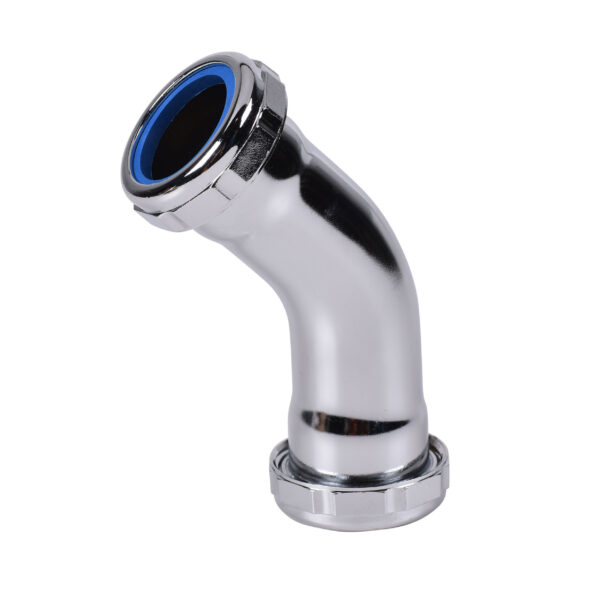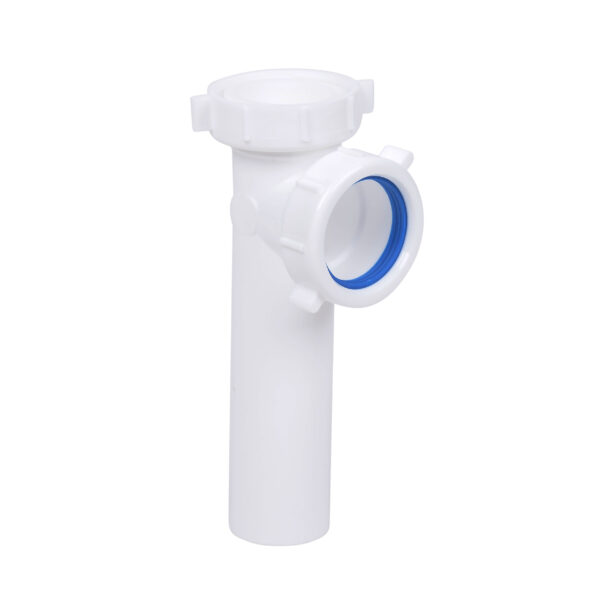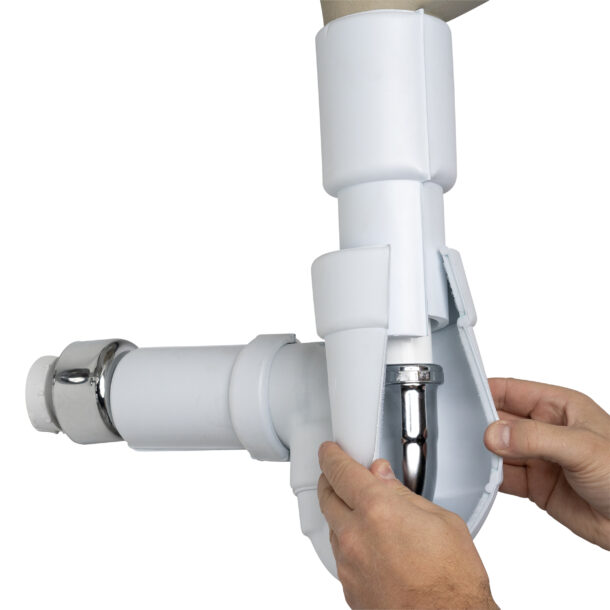Choosing the right tubular for your project is essential as a professional plumber. Not only does it need to be functional, but it also needs to be cost-effective, durable, and aesthetically pleasing to your clients.
This article will guide you through decision-making, weighing the pros and cons of brass and plastic materials, thickness options, and specific applications.
Material Options: When selecting tubular products, you typically choose between brass and plastic materials. Brass tubular products (typically chrome-plated) are more durable and elegant, often used in higher-end or commercial projects. On the other hand, plastic tubular products (or polypropylene materials) are more affordable, easier to cut, and offer corrosion resistance. If you are working on a plumbing project with a tight budget, plastic tubular products may be the better option. Additionally, they are ideal for under-sink applications where aesthetics are less crucial.
 Factoring in the application is also crucial. For instance, there are certain scenarios where brass is unsuitable, such as in science labs or some dentist’s offices. The waste materials in these settings can be highly corrosive to metal, which could cause significant damage over time. In such cases, a plastic trap can be advantageous because plastic does not corrode and is generally unaffected by most chemicals.
Factoring in the application is also crucial. For instance, there are certain scenarios where brass is unsuitable, such as in science labs or some dentist’s offices. The waste materials in these settings can be highly corrosive to metal, which could cause significant damage over time. In such cases, a plastic trap can be advantageous because plastic does not corrode and is generally unaffected by most chemicals.
Unlike PVC/ABS pipes, plastic tubular products (or polypropylene materials) cannot be assembled with solvent cements but require slip nuts and washers.
Thickness Options: If you choose brass tubular products, you will need to consider the thickness options available. Brass tubular products come in three thicknesses: 17 gauge (commercial grade), 20 gauge (mid-range thickness), and 22 gauge (budget grade). The thicker the product, the more expensive it will be; however, it will also be more durable. If you are working on a commercial-grade project requiring more durability, you may consider using 17- gauge brass products. But for smaller residential projects, 20 or 22-gauge brass products will suffice.
On the other hand, all Oatey plastic tubular products are schedule 10 in thickness.

Size: The most common tubular product sizes are 1-1/4″ and 1-1/2″. These are available in brass and plastic products. The trap adapter connection to the branch drain in the wall will determine the largest tubular product that can be connected with a slip nut and washer. This point of connection can also be reduced for 1-1/4″ tubular assemblies with a reducing washer and slip nut. Bathroom sink installations usually are completed with 1-1/4″ products, but 1-1/2″ products will work. Kitchen sink installations can only be completed with 1-1/2″ products.
Specific Applications: To choose the right tubular for your project, you need to know the specific applications available. Oatey offers a wide range of tubular products for various applications, including P-Traps, S-Traps, Wall Bends, Extension Tubes, and more. Additionally, they provide covers for ADA sink installations, including center/end outlet waste covers and P-trap covers. You must choose the right application for your project, ensuring it fits correctly with other plumbing components.
When selecting the best tubular products, consider the application. Oatey offers a variety of tubular products, including P-Traps, S-Traps, Wall Bends, Extension Tubes, and more, all designed for specific applications.
Here are examples of tubular applications and the appropriate tubular product for each.
- P-Traps: Ideal for under-sink installations, P-Traps are designed to prevent sewer gases from escaping into your home. They are most commonly used in bathroom and kitchen sinks.
- S-Traps: S-Traps are similar to P-Traps but are no longer approved for installations and are primarily in older homes and buildings.
- Wall Tubes: These are pieces of pipe with a curve that fits under the sink and connects the P-Trap to the house’s sanitary system. Wall Tubes are connected to the J-Bend to form the P-Trap and direct wastewater from the sink drain to the waste line without leaks.
- Extension Tubes: These extend the waste pipe to the wall or floor. Extension Tubes come in various lengths and can be cut to size, offering flexibility for accommodating different installation needs.
- Double Slip Joint Offsets: Double Slip Joint Offsets are essential for creating a seamless connection between two pipes at different heights or angles. They come in handy when you need to navigate around obstacles during a plumbing installation.
- Branch Tailpieces: Branch Tailpieces are used to connect a dishwasher discharge hose to the sanitary system, making them ideal for dual-basin or single-bowl kitchen sinks that do not have a garbage disposal.
- End Outlet Continuous Waste: Ideal for dual-basin kitchen sinks.
- Center Outlet Continuous Waste: Used when the drain is centered under a dual-basin sink.
- Direct Connect Waste: Offers a direct connection to the sink basket strainer.
- J-Bends: Helps to form the P-Trap under the sink, connecting to wall tube.
- Captured Nuts and Washers: Made of durable polypropylene, these are used to secure your plumbing fixtures.
Accessories and Other Best Practices: Oatey offers a variety of tubular accessories, including slip joint nuts and washers, flanges, air gaps, and multiple garbage disposal accessories. It is always best to use these accessories with your tubular products to ensure secure connections and prevent leaks.
Further, Oatey recommends using thread tapes or pipe joint compounds on the fine threads of the pop-up tailpiece to prevent leakage. Additionally, considering corrosion resistance and insulating tubular pipes can increase efficiency and durability.
Considering corrosion resistance and insulating tubular pipes is essential for efficiency. Galvanized and stainless steel piping are not commonly used for tubular products, so only use them if your project demands it. Thread tapes and pipe joint compounds may also be used on the fine threads of a pop-up tailpiece to prevent leakage.

Oatey offers covers for ADA sink installations, including center/end outlet waste covers and P-trap covers.
Please note that the specific type of tubular product you will need depends on the requirements of your plumbing project. Be sure to understand these requirements before making a purchase. Always consult local building regulations and professionals as required.
In conclusion, selecting the right tubular for your project as a professional plumber is crucial. Weighing the material options, thickness options, specific applications, and best practices can help you make the right decision for your project.
 About the Author
About the Author
Sean Comerford is Technical Applications Manager at Oatey Co. He is third-generation tradesman with nearly 20 years of plumbing experience, including serving as the lead plumber for commercial & residential new construction, service and fire protection jobs. He holds a State of Ohio Fire Protection License for Sprinkler and Standpipe.

 About the Author
About the Author


Join the conversation: